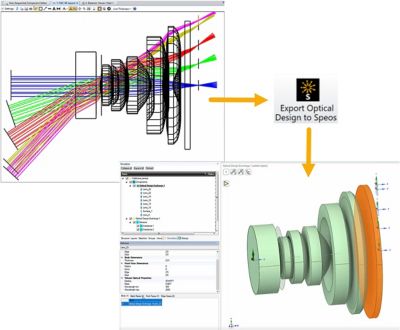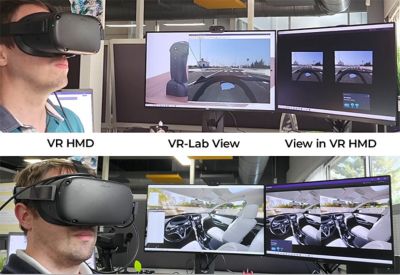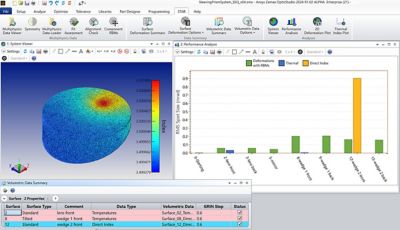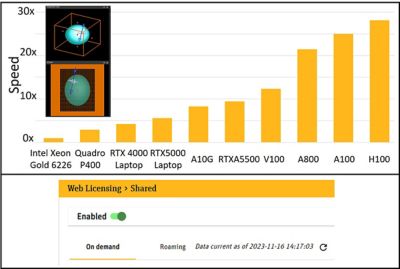-
-
Access Free Student Software
Ansys empowers the next generation of engineers
Students get free access to world-class simulation software.
-
Connect with Ansys Now!
Design your future
Connect with Ansys to explore how simulation can power your next breakthrough.
Countries & Regions
Free Trials
Products & Services
Learn
About
Back
Products & Services
Back
Learn
Ansys empowers the next generation of engineers
Students get free access to world-class simulation software.
Back
About
Design your future
Connect with Ansys to explore how simulation can power your next breakthrough.
Free Trials
ANSYS BLOG
April 1, 2024
Optics Simulation Enhancements in Ansys 2024 R1
Miniaturization is one of the main design targets in today’s optics industry. In our latest release Ansys 2024 R1, we’ve added features to our optics solvers to make miniaturization faster, easier, and more affordable. Applications include:
- Making endoscope cameras smaller so there is less chance of tissue damage during a medical procedure.
- Making augmented reality glasses comfortable to wear (lighter, more compact, balanced, and stylish) so a pilot or a surgeon can wear them for hours.
- Reducing the weight and physical footprint of camera lenses on mobile phones to allow more space for the user display and embedded artificial intelligence (AI) components on the phone.
New features in our optics simulation solutions significantly improve the workflows in Ansys Lumerical, Ansys Zemax OpticStudio, and Ansys Speos, ensuring that engineers can meet tight delivery deadlines.

The Challenge of Metalenses
One key to miniaturization is the development of metalenses. A metalens is a flat, thin optical component made up of subwavelength meta-atoms that can manipulate electromagnetic (EM) waves to focus or spread light into a specific pattern. Overall, metalenses can be used to make devices much smaller and lighter than their glass-based lens predecessors.
But to make a metalens functional in a large system like an autonomous car camera, an AR/VR headset, or an endoscope, three layers of design and analysis are needed. These layers go from the nanoscale of the individual meta-atoms to the macroscale of the metalens itself, up to the integration of the metalens into a complete system.

Ansys Optics simulation software offers a complete, end-to-end solution at all three levels, and in 2024 R1 we have added features to this software suite to make the process of designing metalenses faster and easier.
Starting with Lumerical — which operates at wavelength scale — engineers can define the shape, materials, and arrangement of the meta-atoms, then simulate all meta-atom variations on the metalens using rigorous coupled-wave analysis (RCWA). They can then export the metalens structure into an HDF5 (.h5) data file for modeling and simulation in OpticStudio. There, the metalens is treated as one of many components in a large macroscopic system in which the light waves can be modeled more simply as geometric rays.
Designers can then simulate a full optical system that includes one or more metalenses, along with other components, and analyze performance metrics such as spot size, modulation transfer function (MTF), and point spread function (PSF). Once the desired optical imaging quality has been achieved, the full optical system (including all metalenses) can be exported to Speos for system-level simulation using the “Export Reduced-order Model to Speos” feature in OpticStudio. In Speos, the full optical system can then be simulated in a 3D environment with artificial and natural light sources and realistic optomechanical components that are used for lens mounts, stray light mitigation, etc.
In 2024 R1, the .h5 file has been updated to contain information across multiple angles of incidence and information about transmission, polarization, and phase. Significant improvements have also been made to reduce the size of the file from the previous version by a factor of five to enable easier data exchange. A new DLL has been developed to read extended data from the .h5 file into OpticStudio for direct modeling of metalenses.

System-level Workflows
Miniaturized optics will still be integrated into a macroscopic optical system, and thus system-level design and simulation remain a critical part of the workflow. Tools that enable fast and efficient data exchange from the component level to the system level and that support fast analysis and design at the system level are essential to the design.
To this end, we have developed a streamlined workflow for importing optical design data (e.g., lens geometries and optical properties) from OpticStudio to Speos. In addition, a new, rapid analysis of main ray sequences in camera sensors is compatible with the new optical design exchange now available in Speos.
In addition, a GPU-accelerated version of the Lumerical subwavelength model (LSWM) plugin is fully compatible with Speos GPU for augmented reality applications. Adding support for GPU acceleration can reduce simulation time by a factor of 20 for a typical laptop and by a factor of 100 or more when run on a GPU cluster.

Solution-specific Product Enhancements
Enhancements to Lumerical include:
- Improvements to the GPU acceleration for the Lumerical finite-difference time-domain (FDTD) solver with faster meshing and multi-GPU extended memory capacity.
- A new scalable cluster solution based on SLURM scheduler to deploy Lumerical products, particularly FDTD, on Amazon AWS and Microsoft Azure clusters.
- New Klayout and Lumerical Multiphysics (CHARGE, HEAT, or FEM) direct bridge for component design.
- New features (e.g., layer intermixing, strain-induced polarization, nitride green and blue material support) for a complete 2D opto-electronic micro-LED simulation with the CHARGE and MQW solvers.
- A new frequency noise spectrum analyzer to figure out the noise spectrum of a laser source in Lumerical INTERCONNECT.
- New dark mode for the user interface of all Lumerical solvers.
Enhancements to OpticStudio include:
- New operands for phase constraint optimization to ensure manufacturability of metalenses and other holographic elements.
- A new DLL for reading data from metalenses designed in Lumerical that enables direct modeling of these metalenses in OpticStudio.
- A new Export Optical Design tool in Speos to export supported geometries and optical parameters from an OpticStudio lens design into a .odx file that can be directly imported into Speos.

Enhancements to Speos include:
- A new user interface for enhanced comfort and a more intuitive experience in Speos Live Preview
- An enhanced reduced-order model (ROM) for camera sensors designed in OpticStudio that permits more accurate camera acquisition in Speos by accounting for geometrical and chromatic aberrations
- New head-mounted display (HMD) tracking compatibility for a total immersive results experience
To learn more about the latest enhancements for Ansys Optics solvers, watch the webinar “What’s New in Optics in Ansys 2024 R1?”